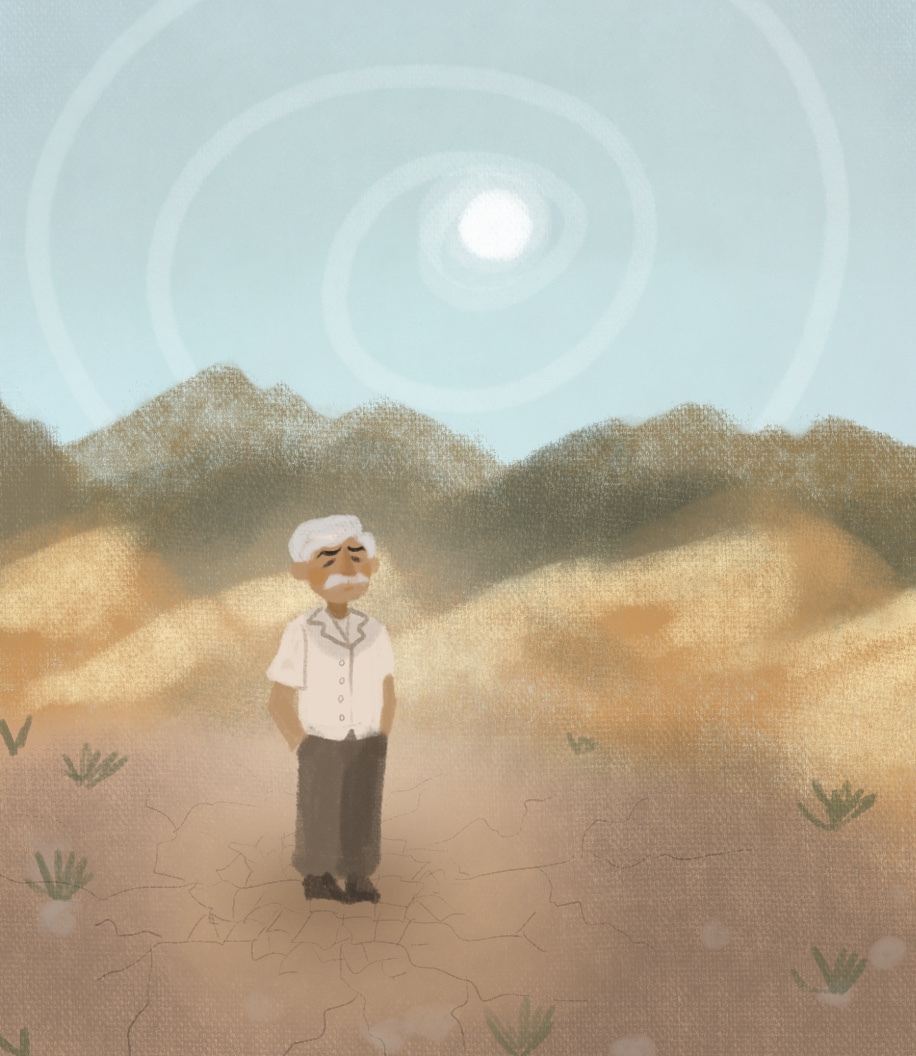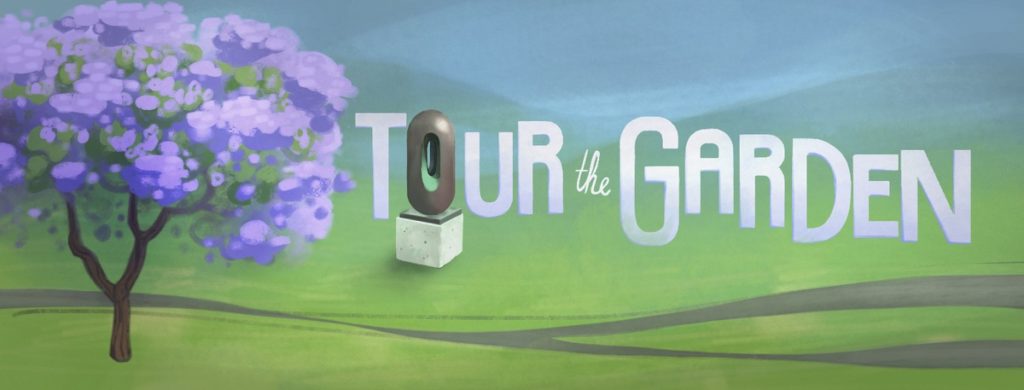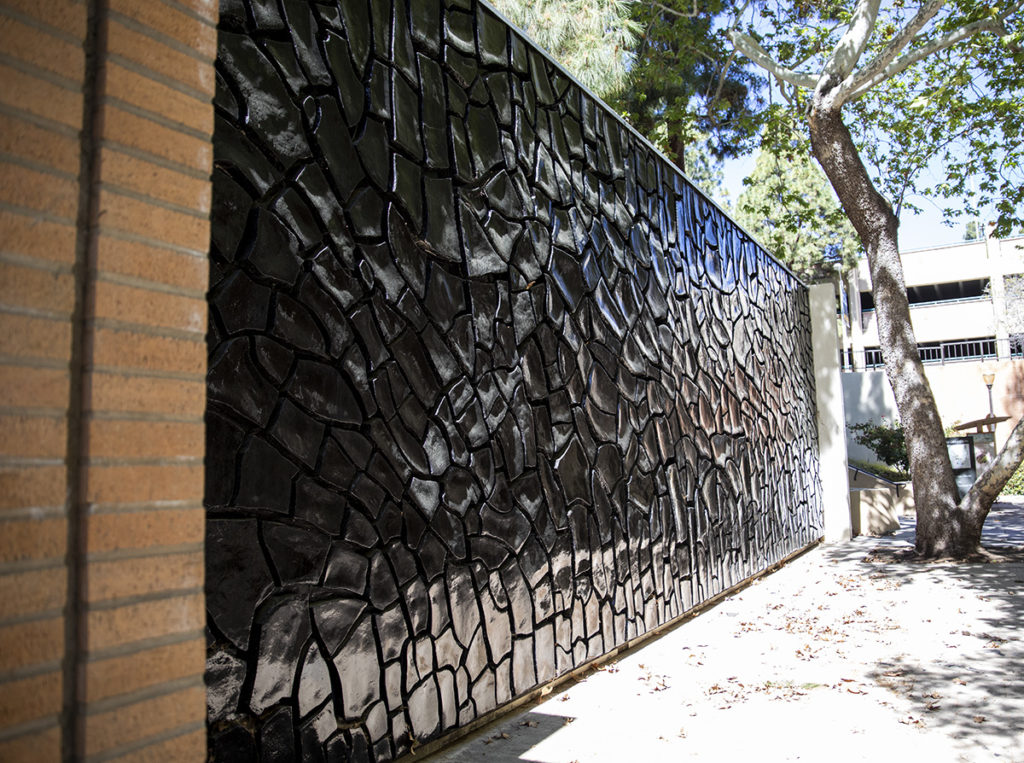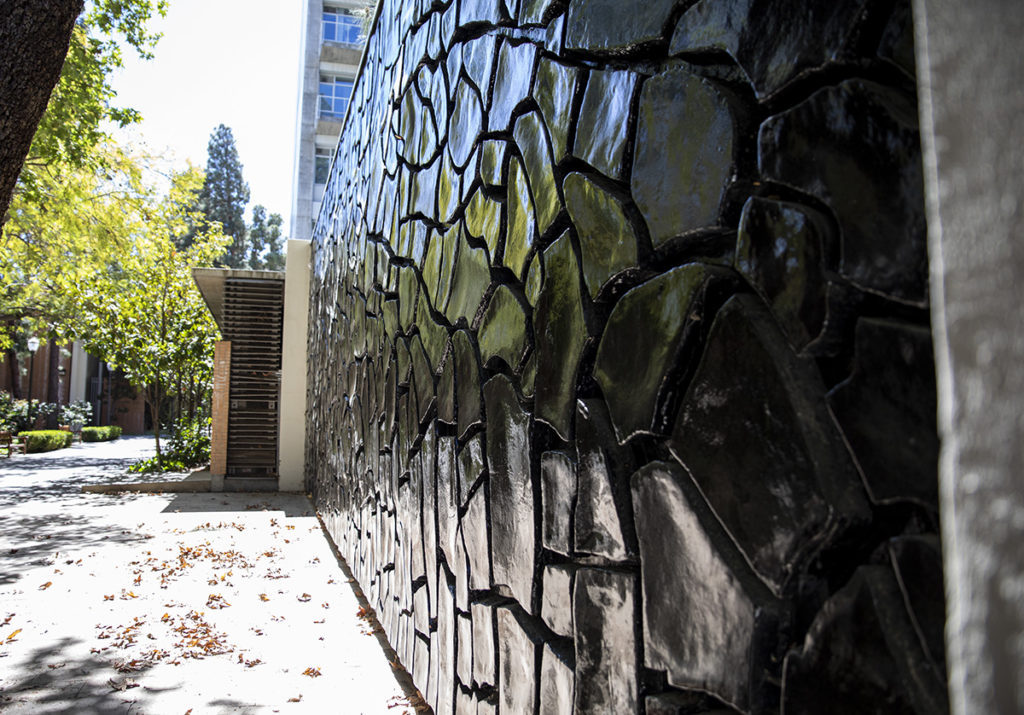Tour the Garden: Sculpture garden’s architecture highlights contrast with surrounding buildings

(Katelyn Dang/Illustrations director)
By David Egan
March 11, 2022 5:59 p.m.
This post was updated March 14 at 6:08 p.m.
As chancellor from 1960 to 1968, Franklin D. Murphy conceived of and curated UCLA’s Franklin D. Murphy Sculpture Garden. The bucolic hills and surrounding pathways, completed by architect Ralph Cornell in 1967, serve as a community hangout and the backdrop for some of the finest sculptures of the 20th century. Follow columnist David Egan as he explores the world of the sculpture garden and leads a tour of five artistic gems on North Campus.

With rolling hills among rigid buildings, the Franklin D. Murphy sculpture garden draws architectural contrast.
Professor emeritus of history, architecture and urban design Thomas Hines said landscape architect Ralph Cornell likely tried to highlight this contrast with the garden’s design. While nearby buildings like Bunche Hall and the Broad Art Center are rectangular and rational, Hines said the garden is a contoured, inviting art space. Hines, who was hired at UCLA near the end of Franklin D. Murphy’s chancellorship, said Murphy and UCLA’s architects consciously wanted to create a modernist campus.
“The sculpture garden wouldn’t exist if it were not for him,” Hines said. “(UCLA) really achieved greatness in his years, and a lot of it had to do with architecture. … I don’t think it’s great architecture, some of it – but it’s very ’50s, ’60s, ’70s, and that’s good to have those decades, that era represented.”
[Related: Tour the Garden: Values sculpture garden reflects may not align with UCLA’s culture anymore]
In the ’50s and into the ’60s, the architectural firm Welton Becket & Associates designed buildings on campus, said Michael Osman, associate professor of architecture and urban design. These buildings are in a corporate modern style, Osman said, with an anonymous, standard public university look. But he said UCLA’s architects took more liberties during the 1960s, using brutalist styles and designing spaces such as Ackerman Union and the sculpture garden. While Osman said the late 1960s architecture can feel hulking and disorienting with its deep floor plans, he appreciates the scale and experimentation of buildings such as Bunche Hall and the Luskin School of Public Affairs.
“The sculpture garden is part of an architectural program that felt more experimental and more open,” Osman said. “And today the architectural program has closed down quite a bit, and so campus feels a little more and more corporate.”
This experimentation, Osman said, is also seen in a sculpture behind the Broad Art Center – Alberto Burri’s Grande Cretto Nero. Third-year architectural studies and art student Sofia Chang said a group of students chose this piece as inspiration for a project in her architecture class. The assignment was to design a gallery space based on a sculpture in the garden, and Chang said the group focused on the grooves in the cracked ceramic, as Burri’s wall – with its striations that divide space – is an architectural work.

The sculpture garden’s carved out niches made of brutalist 1960s concrete are an architectural highlight of the space, Osman said. They successfully contrast with the landscape, he said, which evokes a picturesque 17th- or 18th-century British garden. With this interpretation, he said the sculptures can be read as follies, structures landscape architects used to tell classical humanist stories.
Still, the garden is completely open, Osman said, with no gates or patrols that make viewers feel excluded or alienated. Chang said the garden is a successful, accessible environment to be navigated, but that its sculptures are less accessible because of the lack of work by women and people of color. Studying architecture has made her more aware of the effects of physical spaces, including the Broad Art Center, she said.
“(The) Broad (Art Center) also incorporates well into the sculpture garden itself,” Chang said. “They work really well with each other, and the ability to see the sculpture garden from different floors of Broad is really wonderful.”

[Related: ‘Ritual of Return’ exhibit brings back nature with immersive experience]
The sculpture garden is distinctive for its location on a university campus, distinguishing it from other gardens such as Isamu Noguchi’s California Scenario, Hines said. California Scenario in Costa Mesa, California, has a corporate design and is surrounded by skyscrapers, he said. The UCLA sculpture garden, on the other hand, is in a campus environment – Osman said he has had hundreds of lunches in the niches.
Osman first encountered the garden when he interviewed for his job at UCLA 13 years ago. Being from New York City, Osman said he found it humbling to see how the city is organized for drivers and frustrating to adapt to the driving culture. Before he moved closer to campus, he would park at UCLA’s Lot 3 next to the sculpture garden – passing Burri’s Grande Cretto Nero on the way into campus. Past the frustrations of the parking garage, Osman said he walked into picturesque beauty – the world of the sculpture garden.
“From the experience of being humbled and infuriated, I felt elevated, and I felt I was entering a place that had a strong sense of culture and openness,” Osman said.


